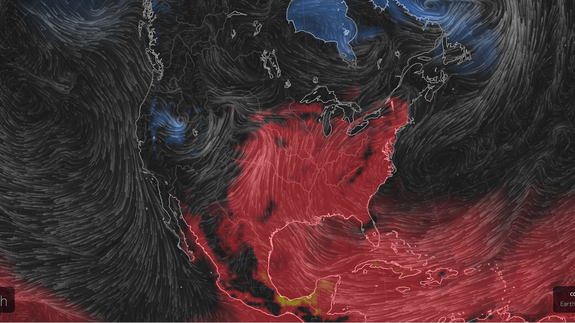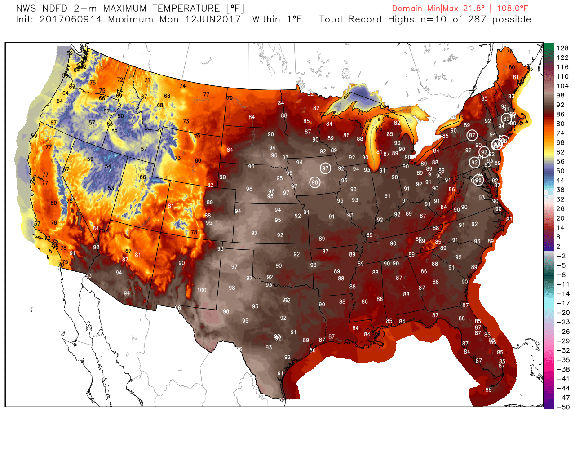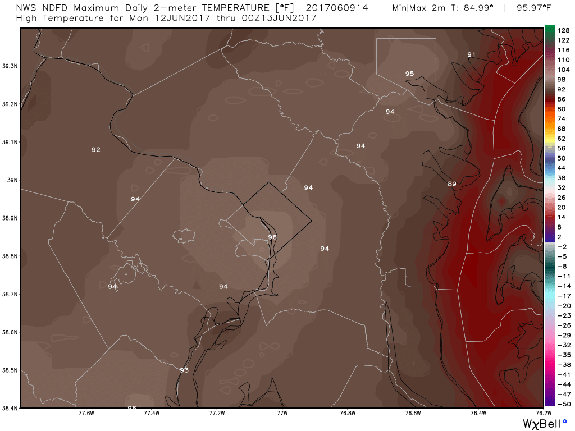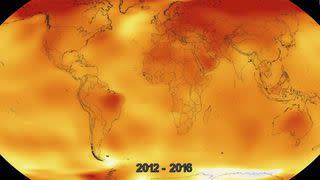Tens of millions will roast in first major U.S. heat wave of the season

To residents of the Northeast United States, this has been the year without spring. The high temperature in Boston on June 7, for example, was a record-tying 52 degrees, as rain and fog swept in off the stubbornly chilly Atlantic waters.
Now, though, Bostonians, along with tens of millions of Americans all the way west to the High Plains, are about to experience the first truly brutal heat wave of the season.
By June 11, the high temperature in Boston is likely to be about 40 degrees Fahrenheit higher than it was just a few days before. The same can be said for New York City, where people adorned with winter hats were spotted on the mist-shrouded streets on June 7.
SEE ALSO: I wrote THE BEST presidential briefing on global warming for Donald Trump
By the end of the weekend, however, those same people will need to break out their tank tops, shorts and sandals to find it bearable to be outside.
The persistent chill in some areas, particularly in New England, could make the heat more dangerous, since people won't be accustomed to the hot weather.

Image: weatherbell analytics
It's well-known to public health experts that early season heat waves tend to be more dangerous than later season events, in part because the human body can become somewhat used to hot weather over time.
The heat is already building across the Plains and Midwest, and a southwesterly flow of air at mid and upper levels of the atmosphere will cause the hot, humid air mass to slither into the Mid-Atlantic and Northeast by Sunday.
High temperatures in Washington, D.C. are forecast to be in the mid-to-upper 90s Fahrenheit from Sunday through Wednesday, with heat indices in the low 100s Fahrenheit.
Similar conditions are forecast for Baltimore and Philadelphia, and although New York and Boston will be slightly cooler, both cities may see a true heat wave — which is defined as at least three days with high temperatures of 90 degrees Fahrenheit or higher.

Image: weatherbell analytics
On Sunday, 90-degree high temperatures are expected from Chicago to Detroit and eastward to Boston. High temperatures will range from 10 to 25 degrees above average during the heat wave from the Midwest through the Northeast, with a few locations seeing even greater temperature anomalies.
Also of note is that nighttime low temperatures are expected to remain very high, particularly in urban areas, potentially setting records for warm overnight low temperatures (technically known as record high minimums). Low temperatures will be up to 20 degrees Fahrenheit above average for this time of year in the Midwest, Northeast, and Mid-Atlantic by early next week. This means low temperatures are unlikely to fall below the 70s Fahrenheit in these areas.
Studies show that heat waves are especially deadly when people aren't given a chance to cool down overnight after a long, hot day. This is part of the reason why those without air conditioning are more vulnerable to heat-related health problems.
In general, overnight low temperatures have been increasing faster than daytime high temperatures across the U.S. in recent decades, which has to do both with human-caused global warming and urban sprawl.
The heat wave should ebb by late in the weak as a cold front swings southeast, cooling off the Midwest and Northeast at least.
Heat waves are one of the surest signs of human-caused global warming, with studies showing a sharply increased risk of such events around the world.
A study published in April found that the warming-to-date has already caused the severity and probability of the hottest month and hottest day of the year to increase at more than 80 percent of weather observing sites examined worldwide.
"The world isn’t at the point where every extreme hot event has a human component, but it’s getting close,” Noah Diffenbaugh, a climate scientist at Stanford University and lead author of the study, said.
WATCH: It's official, 2016 was Earth's warmest year on record

